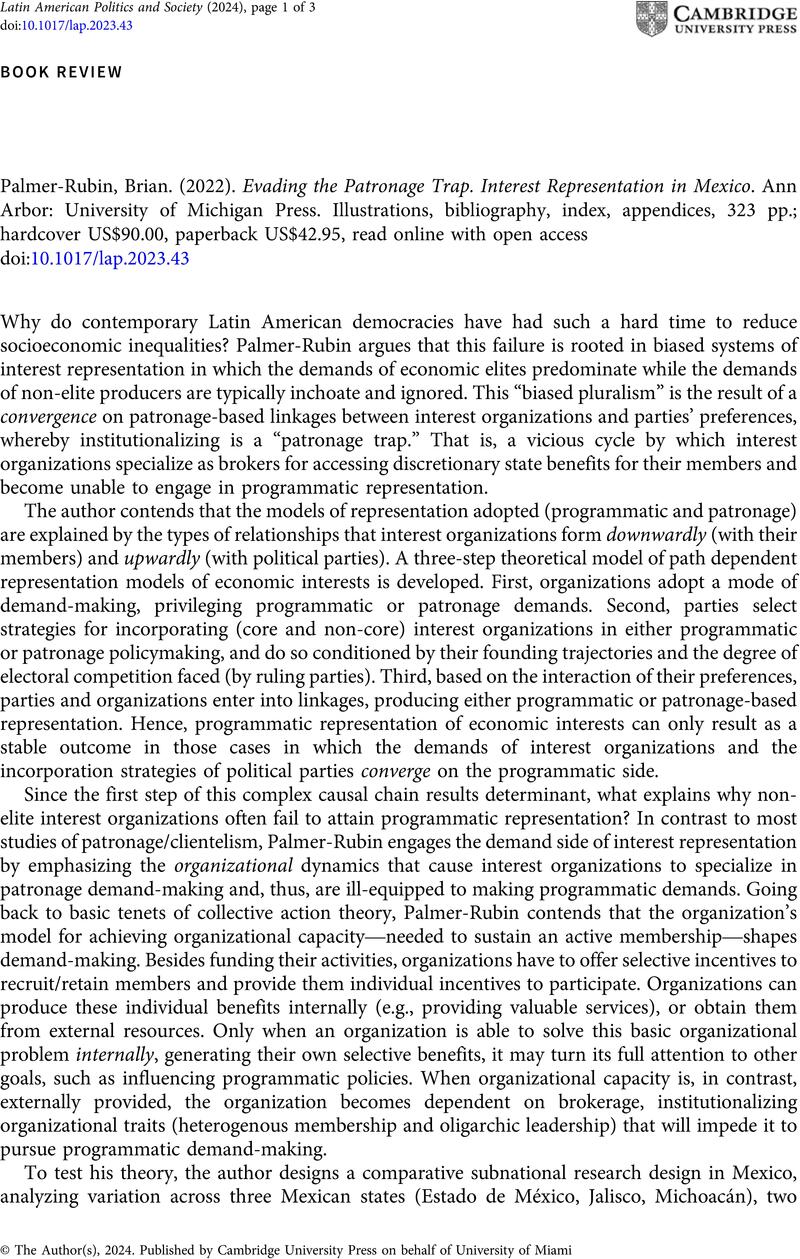No CrossRef data available.
Article contents
Palmer-Rubin Brian. (2022). Evading the Patronage Trap. Interest Representation in Mexico. Ann Arbor: University of Michigan Press. Illustrations, bibliography, index, appendices, 323 pp.; hardcover US$90.00, paperback US$42.95, read online with open access
Review products
Palmer-Rubin Brian. (2022). Evading the Patronage Trap. Interest Representation in Mexico. Ann Arbor: University of Michigan Press. Illustrations, bibliography, index, appendices, 323 pp.; hardcover US$90.00, paperback US$42.95, read online with open access
Published online by Cambridge University Press: 20 February 2024
Abstract
An abstract is not available for this content so a preview has been provided. Please use the Get access link above for information on how to access this content.

- Type
- Book Review
- Information
- Copyright
- © The Author(s), 2024. Published by Cambridge University Press on behalf of University of Miami


